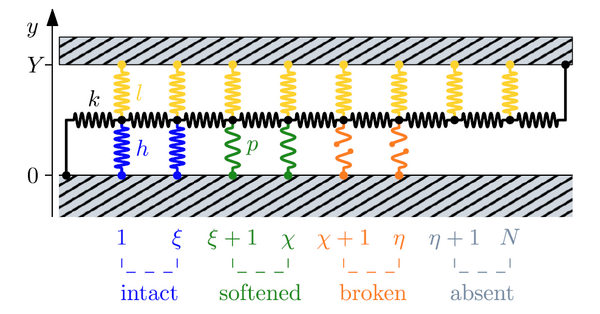
Stefano Giordano
Présentation
Stefano Giordano was born in Genoa, Italy, on October 14, 1971. He received the “Laurea” degree in electronic engineering (summa cum laude) from the University of Genoa, Italy, in 1996, and the Ph.D. degree in materials science from the University of Trento, Italy, in 2000. He subsequently joined the Department of Physics of the University of Cagliari, Italy. Since October 2010, he has been CNRS Researcher at the Institute of Electronics, Microelectronics and Nanotechnology (IEMN), Villeneuve d’Ascq, France. His research interests include homogenization methods for heterogeneous materials and structures, multiphysics and multiscale modeling of the thermo-magneto-electro-elastic response of multiferroic materials and spintronic structures, and statistical mechanics of small systems with application to nanomechanics of macromolecules, adhesion problems, nanofriction on rigid or soft substrate, thermoacoustic generation, and phase transitions in fracture mechanics. He has authored or co-authored over 100 papers in leading journals on these topics, five invited chapters in edited books and one textbook.
See also: http://giordanostefano.it/
Dernières actualités
Thermal effects on fracture and the brittle-to-ductile transition

The fracture behavior of brittle and ductile materials can be strongly influenced by thermal fluctuations, especially in micro- and nanodevices as well as in rubberlike and biological materials. However, temperature effects, in particular on the brittle-to-ductile transition, still require a deeper theoretical investigation. As a step in this direction we propose a theory, based on equilibrium statistical mechanics, able to describe the temperature-dependent brittle fracture and brittle-to-ductile transition in prototypical discrete systems consisting in a lattice with breakable elements. Concerning the brittle behavior, we obtain closed form expressions for the temperature-dependent fracture stress and strain, representing a generalized Griffith criterion, ultimately describing the fracture as a genuine phase transition. With regard to the brittle-to-ductile transition, we obtain a complex critical scenario characterized by a threshold temperature between the two fracture regimes (brittle and ductile), an upper and a lower yield strength, and a critical temperature corresponding to the complete breakdown. To show the effectiveness of the proposed models in describing thermal fracture behaviors at small scales, we successfully compare our theoretical results with molecular dynamics simulations of Si and GaN nanowires.
Temperature dependent model for the quasi- static stick–slip process on a soft substrate

The classical Prandtl–Tomlinson model is the most famous and efficient method to describe the stick–
slip phenomenon and the resulting friction between a slider and a corrugated substrate. It is widely used
in all studies of frictional physics and notably in nanotribology. However, it considers a rigid or unde-
formable substrate and therefore is hardly applicable for investigating the physics of soft matter and in
particular biophysics. For this reason, we introduce here a modified model that is capable of taking
into consideration a soft or deformable substrate. It is realized by a sequence of elastically
bound quadratic energy wells, which represent the corrugated substrate. We study the quasi-static
behavior of the system through the equilibrium statistical mechanics. We thus determine the static
friction and the deformation of the substrate as a function of temperature and substrate stiffness. The
results are of interest for the study of cell motion in biophysics and for haptic and tactile systems in
microtechnology.
Tuning photoacoustics with nanotransducers via thermal boundary resistance and laser pulse duration

The photoacoustic effect in liquids, generated by metal nanoparticles excited with short laser pulses, offers high contrast imaging and promising medical treatment techniques. Understanding the role of the thermal boundary resistance (TBR) and the laser pulse duration in the generation mechanism of acoustic waves is essential to implement efficient photoacoustic nanotransducers. This work theoretically investigates, for the paradigmatic case of water-immersed gold nanocylinders, the role of the TBR and laser pulse duration in the competition between the launching mechanisms: the thermophone and the mechanophone. In the thermophone, the nanoparticle acts as a nanoheater and the wave is launched by water thermal expansion. In the mechanophone, the nanoparticle directly acts as a nanopiston. Specifically, for a gold–water interface, the thermophone prevails under ns light pulse irradiation, while the mechanophone dominates shortening the pulse to the 10 ps regime. For a graphene-functionalized gold–water interface, instead, the mechanophone dominates over the entire range of explored laser pulse durations. The results point to high-TBR, liquid-immersed nanoparticles as potentially efficient photoacoustic nanogenerators, with the advantage of keeping the liquid environment temperature unaltered.



